StarStaX is your best free option for Mac star trail photography, offering intuitive blending modes and gap-filling features on both Intel and Apple Silicon processors. Siril provides a lightweight alternative that requires minimal disk space while delivering professional results. Both integrate seamlessly with macOS tools like Finder and Preview for efficient workflows. You’ll need to manage storage carefully when processing large image sets to prevent system slowdowns. The right software choice can transform your night sky captures into breathtaking celestial masterpieces.
StarStaX: A Lightweight Cross-Platform Stacking Solution
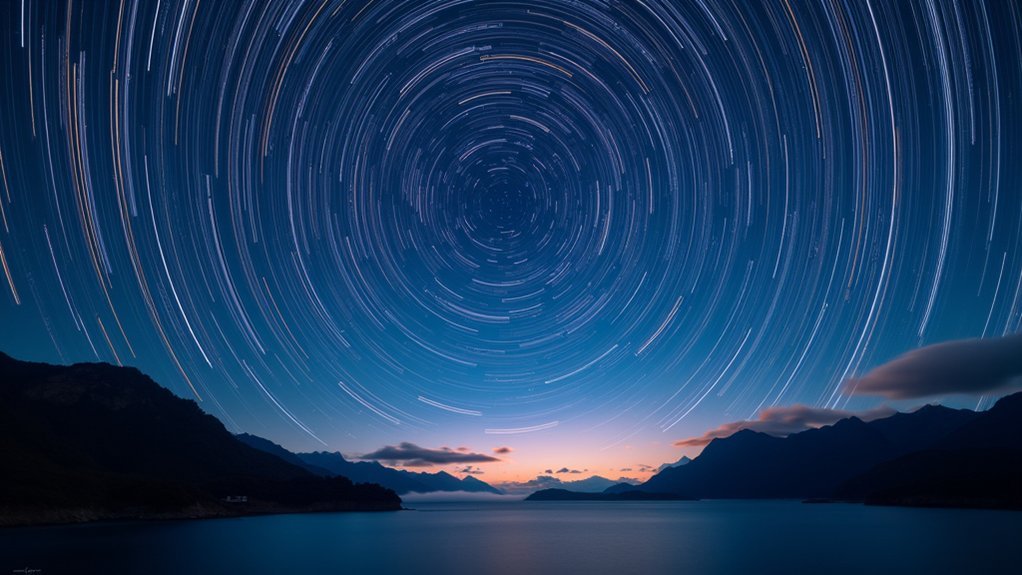
Mac photographers seeking star trail magic will find StarStaX an essential tool in their astrophotography arsenal. This free software works seamlessly on macOS 10.7 or higher, supporting both Intel or Apple M1 processors through a simple .dmg installation.
StarStaX transforms Mac astrophotography with free, seamless star trail processing for both Intel and M1 systems.
You’ll appreciate StarStaX’s versatility with multiple image formats (JPG, TIFF, PNG) and its efficient workflow features. The Lighten blending mode is particularly effective for star trails, while other options like Darken and Average give you creative flexibility.
The cumulative mode saves you time by generating stacked images after each frame processes. With GPU-optimized performance, you can navigate through your stacked compositions quickly, regardless of your experience level.
StarStaX combines powerful functionality with user-friendly design, making star trail photography accessible without requiring advanced technical knowledge.
Essential Features for Mac Star Trail Processing
When capturing star trails on your Mac, you’ll need to understand basic techniques like stacking multiple exposures and choosing the right blending modes to create stunning circular patterns.
StarStaX offers these essential functions with an intuitive interface that doesn’t require advanced technical knowledge, making it accessible for beginners while providing powerful tools for experienced photographers.
A quick comparison of available software reveals that while several options exist, StarStaX stands out for Mac users with its combination of performance, compatibility with multiple image formats, and specialized features like interactive gap filling that enhances your final compositions.
Star Trail Photography Basics
Before diving into Mac-specific software, you’ll need to understand the foundational elements of star trail photography that any processing tool must address. The technique revolves around capturing multiple long-exposure frames that document star movement across the night sky.
For successful star trails, you’ll need a stable tripod, remote shutter release, and a camera capable of shooting in RAW format. This high-quality format preserves vital details needed during processing. Plan to take numerous exposures over an extended period rather than a single shot.
Post-processing is equally important—effective noise reduction prevents grainy results while maintaining stellar detail. The stacking process, using modes like Lighten or Average, combines your frames into smooth, continuous trails.
Most Mac software options include gap-filling features to guarantee seamless trails in your final image.
Software Comparison Chart
Choosing the right software can make or break your star trail photography results. When evaluating Mac options, focus on these essential features:
StarStaX offers multiple blending modes and supports various image formats, making it versatile for different view interpolation modes. It’s optimized for multi-core processing, guaranteeing efficient performance on your Mac.
Siril stands out for its speed and ability to remove hot pixels automatically, while conserving disk space—a significant advantage for large star trail projects.
AstroPixelProcessor delivers exceptional integration speed with a user-friendly interface, though only available as a 30-day trial.
Both StarStaX and Siril outperform the outdated Nebulosity, especially on newer macOS versions like Sonoma. Their multi-core optimization guarantees smooth operation when stacking numerous high-resolution images.
Understanding Blending Modes for Optimal Results
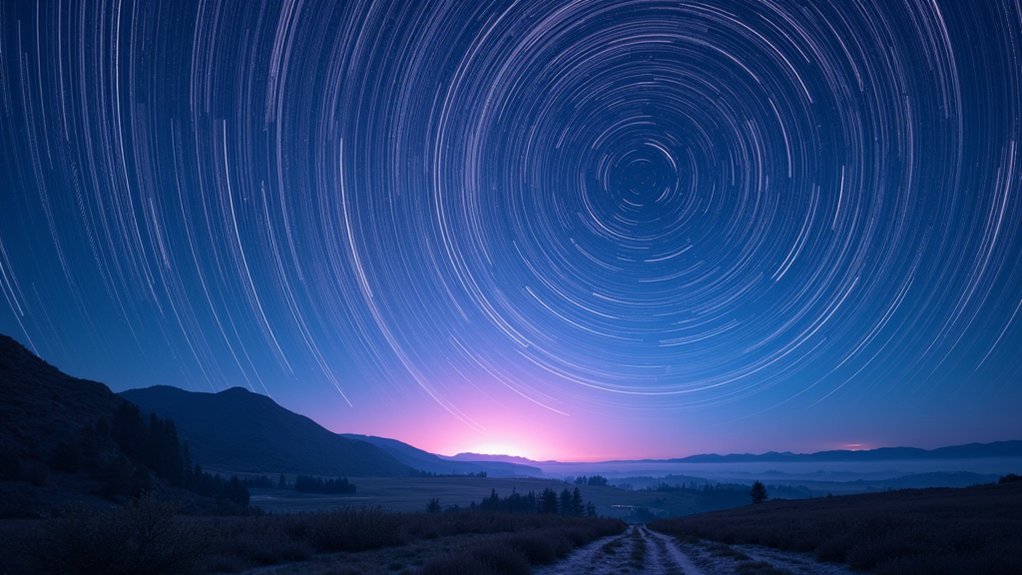
You’ll find significant differences between Lighten and Screen modes when creating star trails, with Lighten preserving star details while Screen brightens the overall image.
Adjusting layer opacity gives you precise control over trail intensity, allowing you to balance between bold streaks and subtle celestial paths.
Stack Mode techniques like Average and Addition offer creative alternatives that can reduce noise or intensify star brightness depending on your specific shooting conditions.
Lighten Vs Screen
When creating star trail images, understanding the difference between Lighten and Screen blending modes can dramatically impact your final results.
The Lighten mode selectively keeps only the brightest pixels from each image in your stack, making star trails appear more defined against the dark sky. This preservation of detail helps your trails stand out with greater clarity and vivid definition.
Screen mode, while useful for some blending scenarios, tends to create a brighter overall image by combining all light information. For star trails, this often results in a washed-out effect with decreased contrast and less distinct trails.
As a Mac user, you’ll likely find Lighten mode more effective for astrophotography, particularly star trails.
However, try experimenting with both modes to determine which aesthetic best suits your particular night sky composition.
Mastering Layer Opacity
Mastering layer opacity represents an essential skill for Mac users creating stunning star trail images.
When stacking multiple exposures, understanding blending modes allows you to control how each layer interacts with others, dramatically affecting your final composition.
- Lighten mode preserves the brightest pixels from each layer, creating continuous, vibrant star trails while allowing for subtraction of dark frames.
- Darken mode retains only the darkest pixels, helping eliminate unwanted light pollution and noise.
- Average mode smooths your trails by blending overlapping areas for a softer appearance.
- Opacity adjustments let you fine-tune the intensity of each layer’s contribution.
Don’t hesitate to experiment with different opacity levels and blending modes in your Mac software.
The perfect balance between these settings will help you achieve the precise star trail effect you’re envisioning for your astrophotography projects.
Stack Mode Techniques
Stack Mode Techniques extend beyond basic opacity adjustments, offering Mac users powerful tools to transform multiple star exposures into enchanting celestial art.
When using StarStaX, you’ll find multiple blending modes that serve different creative purposes. The Lighten mode creates smooth, continuous trails by preserving the brightest pixels—ideal for classic star trail photography. For emphasizing fainter stars, try Darken mode, which retains the darkest pixels across your image stack.
Addition mode provides cumulative exposure benefits, enhancing trail visibility in challenging low-light situations. For fast navigation within the software, experiment with interactive gap filling to eliminate trail discontinuities.
Maximizing Performance on Apple Silicon vs. Intel Macs
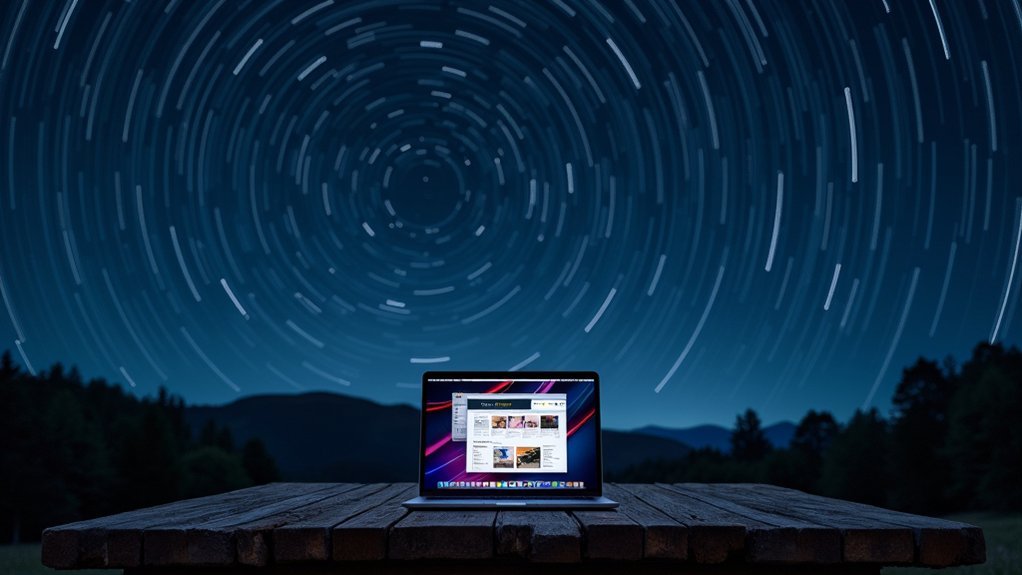
As Apple shifts its Mac lineup from Intel to custom Silicon processors, star trail photography enthusiasts have noticed considerable performance differences between these architectures. The refined design of M1/M2 chips delivers faster image processing and smoother navigation through your star trail projects.
To maximize performance on either system:
- Choose fully 64-bit software like StarStaX or Siril that leverages multi-core processing for both platforms.
- Consider Siril if you’re working with limited SSD space—it requires considerably less disk space during stacking.
- Store image formats on external drives to prevent system slowdowns, especially when processing hundreds of frames.
- Check compatibility before purchasing—some legacy applications like Nebulosity face limitations on Apple Silicon.
For peak performance, confirm your software is regularly updated to take advantage of architecture-specific optimizations.
Workflow Integration With Macos Native Applications
Beyond the raw performance of your Mac, the true power of star trail photography emerges when you leverage macOS’s built-in applications. You’ll find StarStaX works seamlessly with Preview for quick image viewing before processing, while Finder’s drag-and-drop functionality streamlines organizing your star captures.
| macOS App | Star Trail Workflow Benefit |
|---|---|
| Finder | Drag-and-drop image selection with mouse wheel support |
| Preview | Quick image assessment before stacking |
| Automator | Custom workflows for batch renaming files |
| Photos | Centralized library management for projects |
| Quick Look | Rapid image preview without opening applications |
Create efficient workflows by using Automator to rename and organize files, then use Quick Look to rapidly assess images before importing them into StarStaX. The Photos app provides a convenient way to archive your completed star trails while maintaining access to your original captures.
Community-Driven Alternatives to Commercial Software
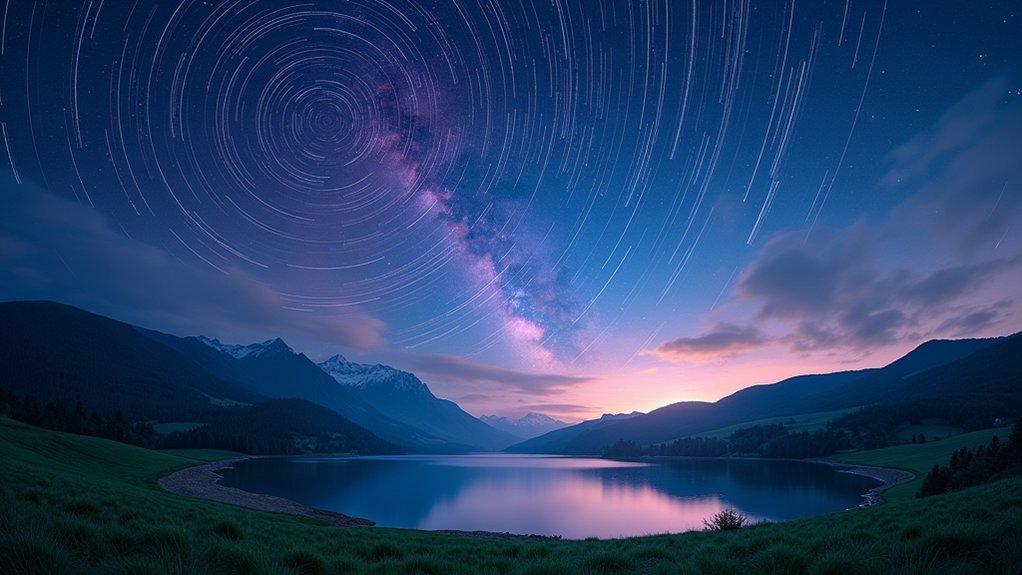
While commercial stacking software dominates the market, the Mac astrophotography community has rallied behind several free alternatives that deliver impressive results.
You’ll find these tools particularly useful when working with star trails or when you need to remove dark frames to improve your final images.
- Siril stands out as the community favorite, requiring minimal disk space and offering continuous improvements without needing a free trial period.
- ASTAP provides a modern alternative that works well across various macOS versions.
- Graxpert complements your workflow with excellent gradient and noise removal capabilities.
- Nebulosity remains available though outdated, potentially limiting compatibility with newer equipment.
These community-endorsed options offer affordable pathways into serious astrophotography while maintaining compatibility with your Mac ecosystem.
Storage Efficiency Considerations for Large Image Sets
Star trail photography generates massive image collections that can quickly overwhelm your Mac’s storage capacity. To maintain storage efficiency considerations while processing hundreds or thousands of images, consider moving your workflow to external drives.
| Strategy | Benefit |
|---|---|
| Stack in small batches (≈1800 images) | Prevents system crashes |
| Use external drives for temp files | Preserves internal SSD performance |
| Designate temporary folders | Support for fast navigation |
| Monitor available disk space | Avoids failed processing |
When working with stacking software like Siril or AstroPixelProcessor, utilize their temporary folder options to organize your workflow. Implementing efficient weighting methods for uneven stacks guarantees you’re only keeping the most valuable data, maximizing storage efficiency while achieving stunning star trail composites.
Troubleshooting Common Mac Compatibility Issues
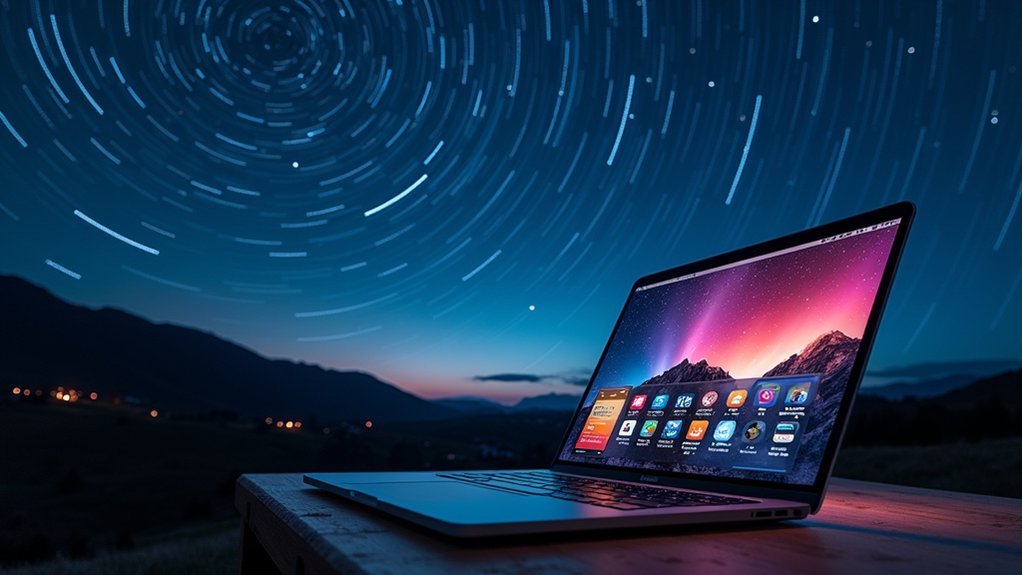
Although star trail photography software promises stunning results, Mac users often encounter compatibility hurdles that can derail an otherwise perfect imaging session.
The celestial promise of star trail software often crashes against the hard reality of Mac compatibility issues.
When your software isn’t performing as expected, consider these common macOS compatibility issues:
- Check if your Mac meets minimum requirements—many applications like StarStaX need macOS 10.7+ and 64-bit processors.
- For Nebulosity users experiencing problems on newer systems like Sonoma, be aware it hasn’t been updated for Apple Silicon compatibility.
- Confirm you’ve allocated sufficient disk space for temporary files, especially when using processing-intensive software like Siril.
- Consider using an external flash drive to improve performance when stacking large image sets.
Before downloading new software, verify your Mac model’s compatibility with the latest macOS versions, as older hardware may limit which applications you can run effectively.
Frequently Asked Questions
What Is the Free Software for Star Trail?
StarStaX is your free star trail software for Mac. You’ll appreciate its Lighten, Darken, and Average blending modes, plus features like gap filling and comet mode for creating stunning night sky images.
Is Star Stax Free?
Yes, StarStaX is completely free for you to use. You won’t need to pay anything to download or access its full features for creating star trail images on your computer.
What Is the Sky Stacker Software for Mac?
Sky Stacker is free Mac software designed specifically for creating star trail images. You’ll find it user-friendly with multiple stacking modes, and it’s optimized for both Intel and M1 Mac processors.
In Summary
You’ve now got multiple free options to create stunning star trail images on your Mac. Whether you’re using StarStaX or community alternatives, you’ll find tools that work well with macOS. Remember to experiment with different blending modes and optimize for your specific Mac hardware. With proper storage management and these troubleshooting tips, you’re ready to transform your night sky captures into breathtaking star trails.
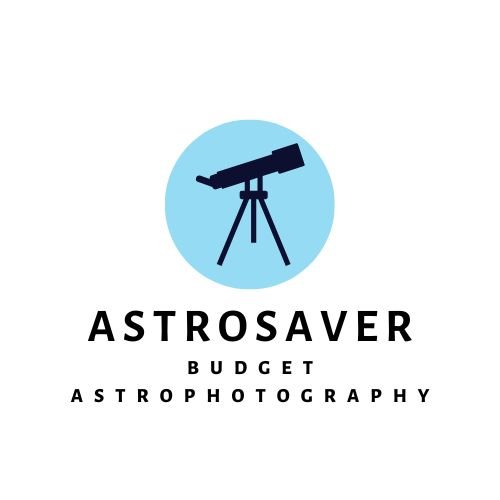
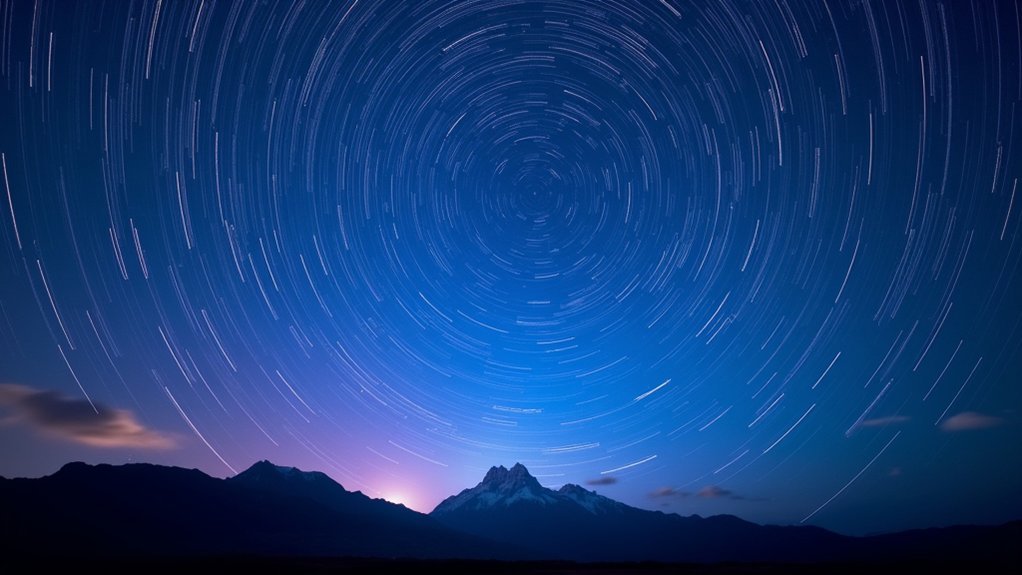

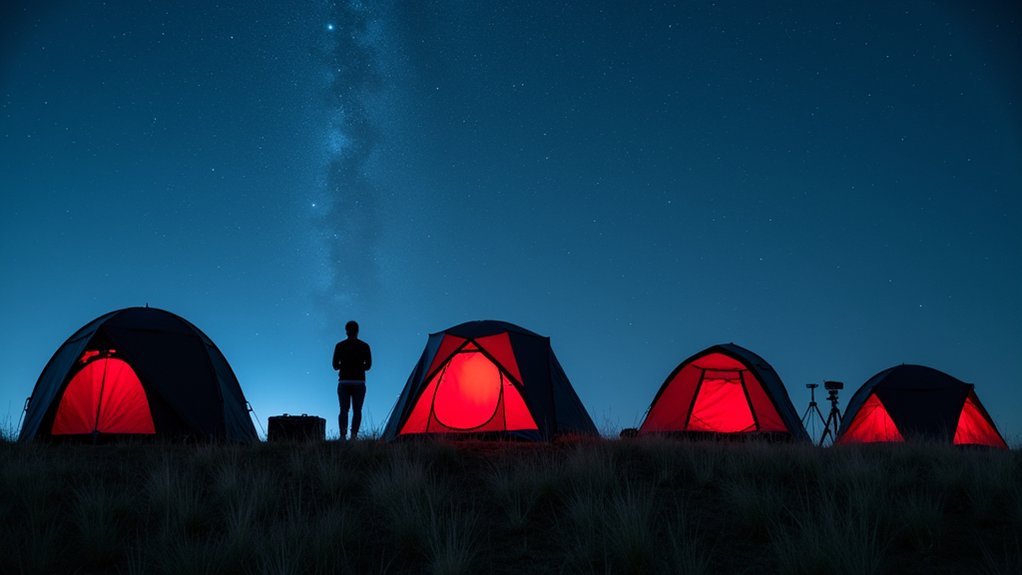
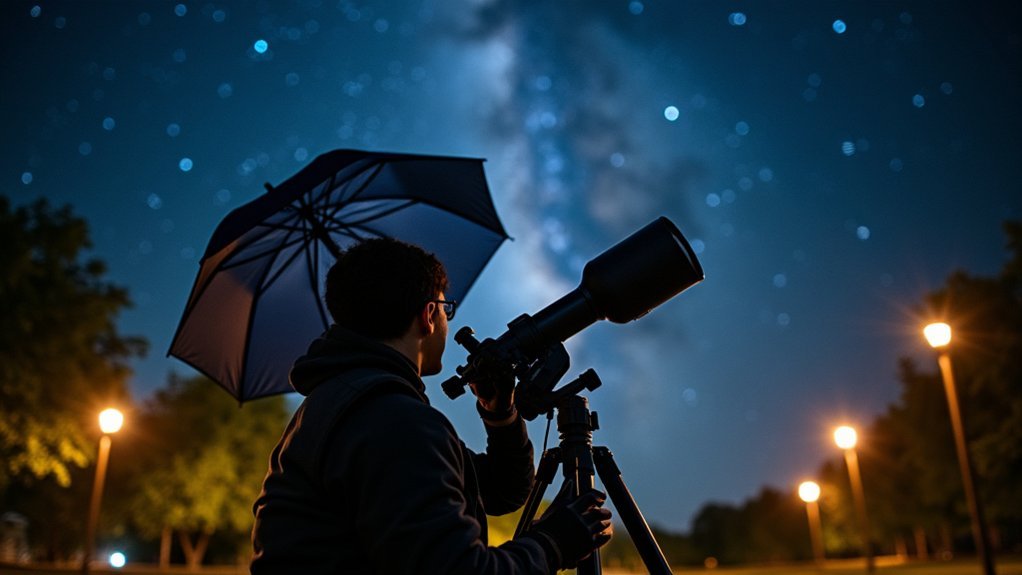
Leave a Reply